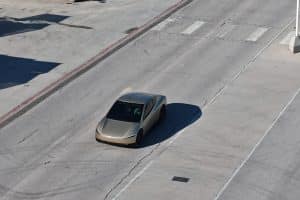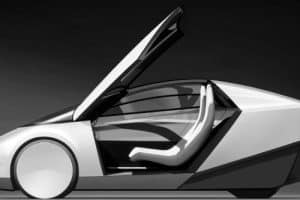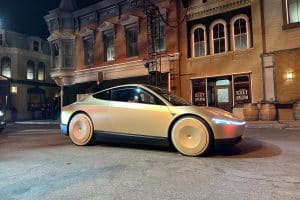- 🚗 Tesla plans to launch a Robotaxi fleet in 2025, presenting a “multi-trillion dollar” opportunity.
- 💼 ARK Invest predicts that Tesla’s Robotaxis could dominate current rideshare giants like Uber and Lyft.
- 🌎 Approval for autonomous ridesharing in California and Texas is expected to proceed next year.
- 🚙 Tesla’s existing Hardware 3 vehicles have doubts about self-driving capabilities; they plan to use Hardware 4 vehicles for Robotaxi.
- 📉 The cost of Robotaxi rides is predicted to be significantly lower than current ride-hailing services and personal car ownership.
- 📈 ARK anticipates that the introduction of Robotaxis could trigger a ten-fold surge in Tesla’s stock value.
- 🔧 Tesla’s lower operational costs due to electric vehicles support the financial viability of the Robotaxi model.
The Dawn of a New Era in Ridesharing
In a rapidly evolving transportation landscape, Tesla’s introduction of a Robotaxi fleet in 2025 promises to be a groundbreaking development. ARK Invest, a renowned investment management firm specializing in disruptive innovation, predicts that Tesla’s Robotaxi service could be a “multi-trillion dollar” opportunity. This bold move positions Tesla as a formidable competitor to established rideshare giants like Uber and Lyft.
Why the Robotaxi Matters
Tesla’s Robotaxis are not just about technological advancements; they’re about transforming the way we approach ridesharing. The launch of these autonomous vehicles is not merely a step forward for Tesla but signifies a giant leap in the automotive industry. Let’s delve into why this initiative is potentially transformational:
- Competitive Edge in Technology: By employing Hardware 4 vehicles, which surpass their predecessors in handling self-driving capabilities, Tesla sets a new standard in autonomous driving technology.
- Economic Advantage: With Tesla’s operational costs being substantially lower than traditional gas-powered vehicles, the financial benefits of the Robotaxi fleet are compelling. This economic efficiency translates to cost-effective rides for consumers, potentially revolutionizing the price landscape of the ridesharing industry.
- Regulatory Milestones: Anticipated approvals for autonomous ridesharing in key states such as California and Texas pave the way for Tesla to launch its fleet, marking a significant regulatory milestone that could inspire similar initiatives nationwide.
The Impact on the Ridesharing Market
ARK Invest suggests that Tesla’s Robotaxi could considerably undercut current rideshare costs. While traditional rides can cost around $2 per mile, Tesla’s Robotaxi aims to reduce this to approximately $0.30-0.40 per mile. This drastic cost reduction is rooted in the inherent efficiencies of electric vehicles, which offer about one-third the operating costs of gas-powered options.
Potential Market Disruption
The introduction of such cost-effective services could reshape market dynamics by making rideshares more accessible and affordable, thereby expanding the potential customer base. The implications for market players like Uber and Lyft are significant:
- Competitive Pressure: As Tesla’s Robotaxis become operational, established rideshare companies might be forced to innovate or lower their prices to remain competitive.
- Market Expansion: Lower price points could unlock markets in areas previously considered unprofitable, potentially increasing overall demand for ridesharing services.
Financial Projections and Stock Implications
ARK Invest anticipates that Tesla’s Robotaxi launch could lead to a ten-fold increase in the company’s stock value, primarily driven by the potential revenue streams from this new venture. This surge not only speaks to the financial community’s confidence in Tesla’s foresight but also underscores the transformative power of the Robotaxi model.
Conclusion: A Disruptive Vision
Tesla’s anticipated Robotaxi fleet epitomizes innovation and strategic foresight. By potentially dominating the ridesharing sector through technological and economic advantages, Tesla is poised to redefine consumer transportation. This transformative vision could cement Tesla’s status as a leader in both the automotive industry and the broader tech-driven economy.
As we look to the future, Tesla’s Robotaxi could well be the catalyst that propels us into a new era of mobility – one defined by efficiency, accessibility, and sustainability.





